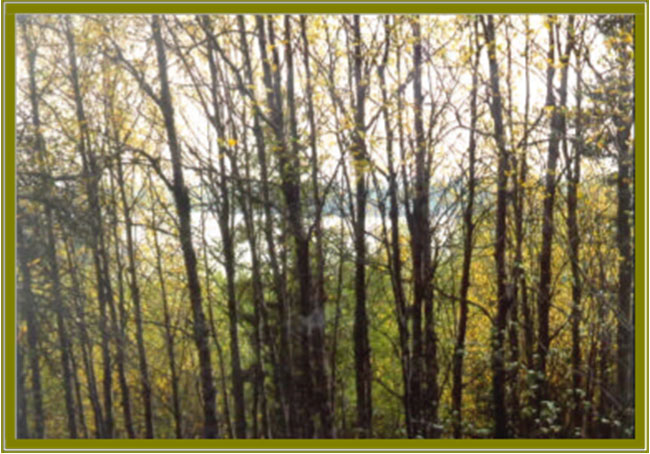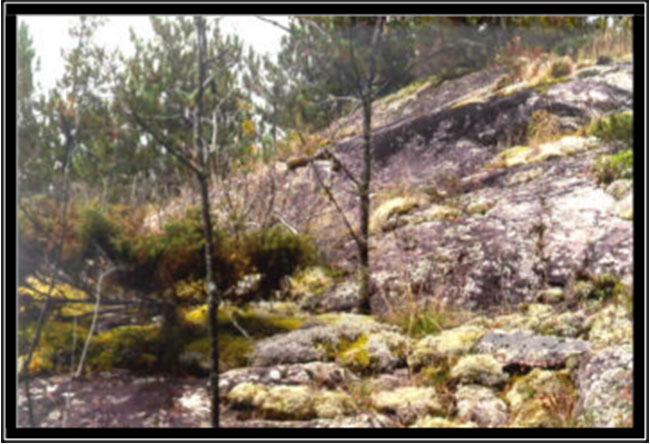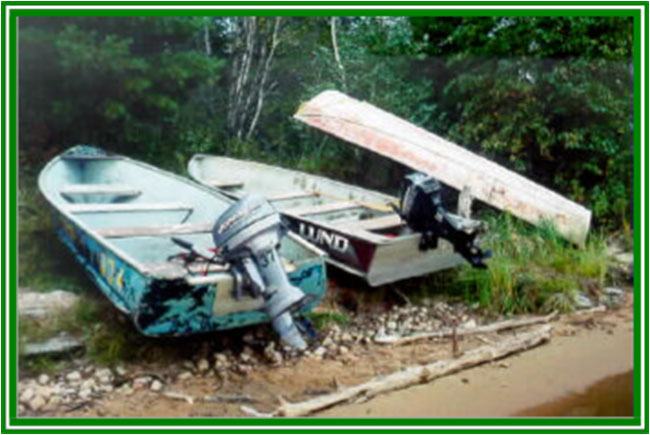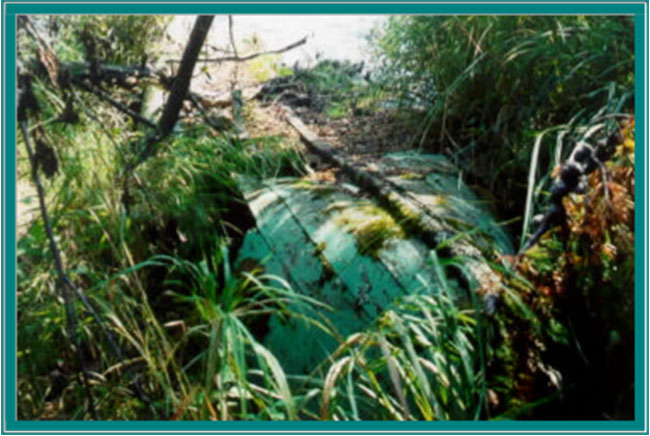Aulneau Interior Conservation Reserve Management Statement
This document provides policy direction for the protection, development and management of the Aulneau Interior Conservation Reserve and its resources.
Prepared for: OMNR, Northwest region
Kenora District, OMNR
June, 2003
Approval Statement
We are pleased to approve this Statement of Conservation Interest for the Aulneau Interior Conservation Reserve.
This Statement of Conservation Interest provides guidance for the management of the conservation reserve and the basis for the ongoing monitoring activities. More detailed direction at this time is not anticipated. Should significant facility development be considered or complex issues arise requiring additional studies, more defined management direction, or special protection measures, a more detailed Conservation Reserve Management Plan will be prepared with full public consultation.
The public was widely consulted during the original regulation process and further public consultation is not required at this time.
The conservation reserve will be managed under the jurisdiction of the Lake of the Woods Area Supervisor, Kenora District, Ministry of Natural Resources.
Signed by:
Fred S. Hall
District Manager
Kenora District
Charlie Lauer
Regional Director
Northwest Region
1.0 Background Information
During the Lands For Life process, areas representative of Ontario’s diverse ecosystems and biological/geological features were identified and recommended for regulation as parks and conservation reserves under the Provincial Parks Act and the Public Lands Act, respectively (OMNR, 1999). Ontario’s Living Legacy (OLL) has expanded the percentage of Ontario’s protected areas to encompass twelve percent of the province’s land and water base. The Aulneau Interior Conservation Reserve is one of the representative areas selected for protection in site region/district 5S-1, and was regulated June 7, 2003 (Reg. 208/03).
The Aulneau Interior Conservation Reserve is located 50 kilometres south of Kenora in the centre of the Aulneau Peninsula on Lake of the Woods (OMNR, 2001). (Refer to Appendix A.) The area was selected as a candidate under OLL due to the representative landform and vegetation types (primarily mixed forests on moderately broken bedrock) existing within the area. Aboriginal interests in the area are primarily those of Big Grassy, Big Island, Northwest Angle #33, Northwest Angle #37, Onigaming, and Whitefish Bay First Nations. All of these First Nation communities are members of Treaty 3.
The intent of this Statement of Conservation Interest is to identify the natural heritage values of the Aulneau Interior Conservation Reserve, the activities occurring within the area and through a set of management guidelines outlines the activities which will be permitted and prohibited. The Aulneau Interior Conservation Reserve is entirely encompassed by the Aulneau Peninsula Enhanced Management Area (EMA), therefore, the management direction for this Conservation Reserve is intended to be integrated with and will reflect that of the broader planning associated with the surrounding EMA. The Aulneau Interior Conservation Reserve is entirely encompassed by the Aulneau Peninsula Enhanced Management Area, therefore, this SCI will provide integration with the management and direction.
For further information regarding the basis of this Statement, please refer to the "Conservation Reserve Policy and Procedure PL 3.03.05", specifically, pages 2-6 and 14-22 of the procedure (OMNR, 1997a).
| Name | Aulneau Interior Conservation Reserve |
|---|---|
| Site Region/Site District | 5S-1 |
| OMNR Administrative Region/ District/Area | Northwest / Kenora / Lake of the Woods |
| Total Area (ha) | 2281 ha |
| Regulation Date | 2003 (anticipated) |
| First Nations with Interest in Area | Big Grassy, Big Island, Northwest Angle # 33, Northwest Angle #37, Onigaming, and Whitefish Bay First Nations. |
| OBM | 20155400054690 |
| Lat./Long. | 49º21’N/94º23’W (NAD 83) |
| Basemap | 39546, 39547, 40546, 40547. |
| Forest Resource Inventory Stand Numbers (Partially or Wholly Represented Within the Reserve) | OBM # 39546: 6695, 6967, 6976, 6982, 6998, 7080, 7087, 7189, 7299, 7366, 7377, 7370, 7561, 7595, 7687, 7757, 7767, 7775, 7793, 7868, 7881, 7957, 7962, 7998, 8072, 8078, 8095, 8168, 8265, 8271, 8386, 8494, 8560, 8563, 8594, 8643, 8657, 8775, 8849, 8853, 8891, 8943, 8964, 8996, 9436, 9463, 9498, 9580, 9588, 9634, 9755, 9766, 9787, 9783, 9838, 9842, 9848, 9857, 9859, 9867, 9890, 9894, 9947, 9951, 9954, 9986, 9993. OBM # 39547: 6904, 7500, 7800, 7811, 8104, 8209, 8609, 8707, 9404, 9601. OBM # 40546: 49, 53, 54, 65, 83, 86, 93, 156, 251, 264, 283, 358, 367, 380, 391, 446, 448, 454, 564, 573, 590, 656, 763, 782, 846, 870, 888, 954, 1062, 1080, 1188, 1359, 1370, 1377, 1380, 1492, 1680, 1965, 1978, 2170, 2390. |
| General Location Description | Located 50 kilometres south of Kenora in the middle of the Aulneau Peninsula on Lake of the Woods (Appendix A.) |
| Access | Access within the conservation reserve is most easily achieved by means of float plane onto Barras and Carstens Lakes. During periods of high water levels, Arrow Lake may be accessible by canoe/portage route through Miles Bay and Thompson Creek. Winter access into the conservation reserve may also be accomplished by means of snowmobile route. |
1.1 Representation Targets
This section provides a summary of the earth/life science values, cultural resources represented, and recreational opportunities available or possible within the Aulneau Interior Conservation Reserve.
| Life Science Representation | The Aulneau Interior Conservation Reserve contains representation of several wetland communities as well as aspen mixedwoods, red/white pine stands, jack pine stands, and bur oak and large-toothed aspen communities forest types (Foster and Harris, 2002). (Refer to Section 2.1.1). |
|---|---|
| Earth Science Representation | The Aulneau Interior Conservation Reserve represents a portion of the Aulneau Batholith and is underlain by granitic Precambrian rocks. Quaternary deposits within the conservation reserve are primarily comprised of glaciofluvial sands and shallow ground moraine till over bedrock (Blackburn, 2002). (Refer to Section 2.1.2). |
| Cultural Resource Representation | No archeological sites or artifacts have been identified or recovered within the Aulneau Interior Conservation Reserve, and any specific archeological significance is unknown at this time (refer to Section 3.5). |
| Recreational Opportunities | Anglers are frequently flown by float plane in to Barras and Carstens Lakes for fishing activities (OMNR, 2001). Other recreational activities that may be practiced within the Aulneau Interior Conservation include hunting, summer camping, and snowmobiling. |
1.2 Survey Information
This section provides an overview of the inventories completed, their level of detail and any further inventories that are necessary.
| Survey Level | Reconnaissance | Detailed |
|---|---|---|
| Life Science | Checklist and summary report, 2001. Survey conducted via float plane and boat | Not required. |
| Earth Science | Checklist and summary report, 2001. Survey conducted via float plane and boat | Not required. |
| Cultural | Not required. | Not required. |
| Recreational | Recreational assessment, 2001. | Not required. |
| Other | Not required. | Not required. |
2.0 Values to be Protected
This section provides a description of the key natural heritage values on the site, their condition relative to past resource use and management activities, as well as their sensitivity to future land use and management activities.
2.1 Life Sciences
The Aulneau Interior Conservation Reserve has been identified as an area containing representative vegetation types, including wetland communities (black ash swamp and shore fen) and mixedwoods (OMNR, 1999; Foster and Harris, 2002). (See Figure 1.) A Life Science survey conducted in the area confirmed the existence of aspen mixedwoods (Foster and Harris, 2002). Other forest ecosystem types occurring within the conservation reserve include: red and white pine stands on bedrock and sandy soils at five shoreline locations; jack pine on burn and bedrock; as well as, bur oak and large-toothed aspen communities with prairie-associated species (such as big bluestem). A large peatland containing representation of black spruce and jack pine bog, treed fen, and conifer swamp also exists in the south portion of the conservation reserve.
Figure 1. Aspen communities are among the forest types represented within the Aulneau Interior Conservation Reserve.

2.2 Earth Sciences
The Aulneau Interior Conservation Reserve was selected as a candidate for protection under Ontario’s Living Legacy partially due to its earth science representation of moderately broken bedrock (OMNR, 1999). An Earth Science inventory conducted on the conservation reserve confirmed the representation of bedrock over more than half of the protected area (Blackburn, 2002). (Refer to Figure 2.)
Figure 2. Over half of the Aulneau Interior Conservation Reserve is represented by bedrock.

The inventory reveals that the entire conservation reserve is underlain by granitic Precambrian rocks, representing a portion of the Aulneau Batholith. Glaciofluvial sands and shallow ground moraine till over bedrock comprise quaternary deposits within the site. Lacustrine clay is suspected to underlie a large area to the northeast and outside the proposed boundaries, as likely indicated by a large section of low-lying aspen occurring at Knickerbocker Inlet. In addition, a large area of organic terrain was documented near Arrow Lake.
2.3 Cultural/Historical Significance
No values of cultural/historical significance within the Aulneau Interior Conservation Reserve have been identified. However, it is recognized that the Aulneau Peninsula holds cultural significance to the area’s First Nations communities.
2.4 Aboriginal Values
Any specific aboriginal values within the conservation reserve remain unidentified at this time. (Please refer to section 3.5.)
2.5 Tourism Values
There are no tourist lodges/outposts located within or adjacent to the Aulneau Interior Conservation Reserve. However, tourists are frequently flown out of Sioux Narrows onto Barras and Carstens Lakes to partake in day long fishing trips (OMNR, 2001). Boat cache sites are located along the east end of Barras Lake and the northeast shore of Carstens Lake for the flown-in anglers use (Figure 3).
Figure 3. The boat cache site located along Carstens Lake’s northeast shoreline.

2.6 Recreational Values
Fishing is the primary activity practiced within the Aulneau Interior Conservation Reserve (OMNR, 2001). Anglers are frequently flown in by float plane for day trips during the summer season. Formal lake surveys have not been completed for Barras or Carstens Lakes, however it is known that fishing opportunities for walleye, northern pike, and yellow perch exist.
The Aulneau Interior Conservation Reserve falls within a separately managed wildlife management unit (WMU 7A), representing solely the Aulneau Peninsula. Only archery and muzzle-loading guns are permitted for large game hunts. The large game mammals sought after on the Aulneau Peninsula are moose, white-tailed deer (to a lesser extent), and black bear (the conservation reserve itself represents portions of three bear management areas). Due to the occurrence of hunting activities on the Aulneau Peninsula, it is probable that hunting of these large game mammals may also occur within the conservation reserve boundaries.
Other recreational activities likely occurring within the conservation reserve boundaries include overnight camping, snowmobiling, and ice fishing. In addition, one well-maintained portage trail exists along Arrow Lake’s north shoreline (leading to Carstens Lake) which may also act as a snowmobile route during the winter.
2.7 Mining
No new mineral exploration may occur in the conservation reserves proposed through Ontario’s Living Legacy (OLL)-Land Use Strategy. No mineral exploration and extraction may occur within the Aulneau Interior Conservation Reserve.
2.8 Aggregate
None developed on site. No future development permitted under the Conservation Reserve Policy and Procedure, February 1997.
2.9 Forest Values
The forest stands within the conservation reserve boundaries are to be protected from any alteration resulting from forest management activities (OMNR, 1999; 1997a). Successional changes associated with each forest type occurring in the area (depending on each stand’s stage of maturity, specific vegetative species composition, and soil type) are anticipated to take place as outlined in the following statements provided the area is not subject to natural large-scale disturbance (forest fires, blow downs). (Please note that for the purpose of this document, the successional time frame is depicted as 100 years.):
- The conifer-dominated mixedwoods on very shallow soils and fresh sandy to coarse, loamy soils within the conservation reserve range from 50 to 85 years in age. In the absence of large-scale natural disturbance, succession of these stands will likely result in stands with declined canopy tree cover, dominated by Black Spruce with remnant Jack Pine and (potentially) White Birch and Balsam Fir (Anderson, 2001; Dawe, 2001; OMNR, 1997b).
- The hardwood-dominated mixedwoods on fresh to moist, sandy to coarse, loamy soils within the conservation reserve range from 50 to 60 years in age. Over time and in the absence of natural disturbance, pathological problems will likely kill of the hardwood component of these stands allowing coniferous species (particularly Spruce and Balsam Fir) to regenerate the sub-canopy and seedling layers (Anderson, 2001; Dawe, 2001; OMNR, 1997b). The result is anticipated to be a mixed conifer species stand at various stages of maturity and a more open canopy.
- The Black Spruce-dominated wetlands (ranging in age from 50 to 110 years) on organic soils will likely maintain themselves over the next 100 years due to the nature of the Sphagnum Moss bed and high water table resulting in slow growth of these stands (Anderson, 2001).
- Due to the ecology of Black Ash, this stand (at 60 years of age) will likely maintain itself over the next 100 years with possible ingress of Balsam Fir, Aspen, Black Spruce and/or Larch along the leading edges of the stand (Anderson, 2001; Dawe, 2001).
2.10 Trapping
The Aulneau Interior Conservation Reserve forms portions of three, registered trapline areas.
2.11 Wildlife
Extensive evidence (scats, tracks, and trails) of moose inhabitance was observed within the Aulneau Interior Conservation Reserve during September field site visits. In 2000, the population of moose inhabiting the Aulneau Peninsula (as a whole) was estimated at approximately 750 animals (OMNR, 2001).
The potential for white-tailed deer inhabitance of the conservation reserve also exists seeing as an estimated 200 animals populate the Aulneau Peninsula (OMNR, 2001). In addition, the Aulneau Peninsula was once inhabited by elk and has been classified as some of the highest- rated suitable habitat for elk in Ontario. For this reason, recent elk reintroductions (winters of 2000 and 2001) southwest of Sioux Narrows may allow for the re-establishment of an elk population on the Aulneau Peninsula.
Additional wildlife known to occur within the Aulneau Interior Conservation Reserve includes the timber wolf, red fox, pine marten, otter, beaver, and various species of waterfowl.
2.12 Commercial Fish
The Aulneau Interior Conservation Reserve represents portions of three commercial baitfishing blocks.
3.0 Management Guidelines
The following topics briefly indicate the existing situation followed by the management guidelines to be implemented or continued.
3.1 Land Tenure
The Aulneau Interior Conservation Reserve consists entirely of Crown land. Sale of lands is not permitted. No private land or development currently exists in the area. No commercial land or development currently exists in the area.
3.2 Existing and Proposed Development
At one point, a trapper’s cabin had been developed along Carstens Lake’s north shoreline. In the same general vicinity, a roadway had been constructed (Appendix B). Both the trapper’s cabin and roadway have entirely deteriorated and no longer exist. Other than the portage route interconnecting Carstens Lake’s south shore with Arrow Lake’s north shore, no further development has taken place within the Aulneau Interior Conservation Reserve. No future development will be permitted within the conservation reserve that would result in disturbance of the forest including its understory. New tourism facilities (e.g. commercial boat caches) may be permitted provided that they do not adversely affect the natural values undergoing protection.
Figure 4. Remnants of a boat cache located near the site where a trapper’s cabin had once existed.

3.3 Recreational Activities
Most recreational activities that have been traditionally practiced within the Aulneau Interior Conservation Reserve may continue provided that they pose little threat on the natural ecosystems and features identified/protected within the conservation reserve (OMNR, 1997a). Permissible activities include boating, fishing, hiking, hunting, scenic/wildlife viewing, snowmobiling, and camping. Non-residents over the age of 18 partaking in Crown land camping activities require Crown Land Camping permits. Maintenance of the existing portage trail will be permitted, and the construction of new trails for recreational purposes may be considered where compatible with environmental values and other recreational uses.
3.4 Commercial Activities
Trapping will continue as a permitted activity, as the area forms portions of three registered traplines. No trapper’s cabins currently exist within the conservation reserve boundaries. The area is presently part of three commercial baitfishing blocks and three Bear Management Areas; no changes of these areas are required at this time provided that they do not impact the conservation reserve’s identified and protected natural heritage values. Although discouraged new utility corridors may be permitted. No further commercial activities will be permitted in the area, including road construction and removal of aggregates (OMNR, 1999; 1997a).
This conservation reserve falls within the Kenora Forest Management Unit boundaries. No harvest blocks have been allocated within the conservation reserve boundaries during previous Forest Management Planning processes. Furthermore, no future harvesting of forest resources within the conservation reserve boundaries will be permitted, as the conservation reserve will be removed from the operable Kenora Forest Management Unit Land Base and Sustainable Forest License.
This conservation reserve has been withdrawn from all mining exploration and extraction activities by the Ministry of Northern Development and Mines (MNDM).
3.5 Aboriginal Interests
The Aulneau Interior Conservation Reserve is likely of primary interest to Big Grassy, Big Island, Northwest Angle #37, Northwest Angle #33, Onigaming, and Whitefish Bay First Nations due to their relatively close proximity to the conservation reserve. Any specific aboriginal values associated with the conservation reserve are unknown at this time. No values were identified during First Nation consultation. Nothing in this Statement of Conservation Interest will affect existing aboriginal or treaty rights.
3.6 Natural Resources Stewardship
3.6.1 Vegetation Management
The MNR recognizes fires as an essential process fundamental to the ecological integrity of conservation reserves. In accordance with existing Conservation Reserve Policy and the Forest Fire Management Strategy for Ontario, forest fire protection will be carried out as on surrounding lands.
Whenever feasible, the MNR fire program will endeavour to use "light on the land" techniques, which do not unduly disturb the landscape, in this Conservation Reserve. Examples of light on the land techniques may include limiting the use of heavy equipment or limiting the number of trees felled during fire response efforts.
Opportunities for prescribed burning to achieve ecological or resource management objectives may be considered. These management objectives will be developed with public consultation prior to any prescribed burning, and reflected in the document that provides management direction for this conservation reserve. Plans for any prescribed burning will be developed in accordance with the MNR Prescribed Burn Planning Manual, and the Class Environmental Assessment for Provincial Parks and Conservation Reserves (approval pending).
Fuelwood permits will not be issued within the area encompassed by the Aulneau Interior Conservation Reserve. However, usage of the areas wood resource for shorelunch and campfires will be permitted provided that there will be no resulting damage or alteration of the forest and its understory.
3.6.2 Fisheries and Wildlife Management
No management action is required other than the implementation of existing Wildlife Management Unit and sport fishing regulations and management activities. Fishing opportunities are limited due to site inaccessibility.
A Wildlife Management Plan is being developed for the Aulneau Peninsula Enhanced Management Area. Direction for the Aulneau Interior Conservation Reserve will be made consistent with this management plan, within the bounds of the Conservation Reserve policy and procedure.
3.6.3 Landforms
The landforms represented within the Aulneau Interior Conservation Reserve will not be altered through any landform modification activities, including filling and extracting of aggregates, peat, soils, and similar materials (OMNR, 1997a).
3.7 Cultural Resources Stewardship
No archeological sites or artifacts have been identified or recovered within the Aulneau Interior Conservation Reserve. Further research may be beneficial in uncovering cultural/historical significance within the conservation reserve boundaries and ensuring their protection, provided that the research does not alter the conservation reserve’s currently identified values.
3.8 Client Services
Information regarding this conservation reserve will be made available to ensure that all resource users (particularly forestry and mining companies) are aware of its location, recognized values, and permitted uses. Potential users include tourists, local anglers/hunters/trappers, recreationalists (e.g. snowmobilers), and the general public.
3.9 Research
Non-destructive research relating to cultural and historical values within the conservation reserve would be beneficial to add further potential values to the conservation reserve, as well as to ensure their protection.
3.10 Marketing
There are no marketing requirements at this time.
4.0 Implementation
These management guidelines will be implemented immediately by Kenora District. Any MNR Resource Management Plans or Land Use Plans which include this area will be amended accordingly. Any affected clients will be immediately informed of the changes, should any arise. Administrative responsibility for the conservation reserve rests with the Lake of the Woods Area Supervisor. Implementation will primarily involve monitoring activities to ensure adherence to the management guidelines.
5.0 Review and Revisions
5.1 Review and Revisions
Any amendments to this Statement of Conservation Interest may require posting on the Environmental Bill of Rights (EBR) Registry prior to their approval. Consultation efforts may also be required, as determined by the Area Supervisor, as well as the approval of the District Manager and the Regional Director.
5.2 Public Consultation
5.2.1 Results of Past Consultation
Contact regarding the regulation of the Aulneau Interior Conservation Reserve was made with timber companies, local communities, and the general public in June of 2001. Consultation efforts involved the direct mailing of a District information package to local interest groups (such as the Local Citizens Committee), as well as to all those with patent land, boat caches, Bear Management Areas, trapline areas, baitfishing areas, and Sustainable Forest Licenses within and/or adjacent to the conservation reserve’s proposed boundaries. In addition, newspaper advertisements were issued in the Kenora Enterprise and the Kenora Daily Miner and News in mid-June of 2001.
First Nation consultation associated with the Aulneau Interior Conservation Reserve has been completed. The Grand Council Treaty #3 office had hired an individual to assist both MNR and the area First Nations to complete these consultations. No First Nation values were identified during this consultation effort.
5.2.2 Present and Future Consultation
More widespread consultation is not deemed necessary at this time due to the extensive consultation which took place in June, 2001 (refer to section 5.2.1).
5.2.3 Author
This Statement of Conservation Interest was prepared by Sheila Thomson, OLL Coordinator, Kenora District.
6.0 References
Blackburn, Charles. 2002. Earth Science Inventory: Detailed Information for Site C2375 Aulneau Interior. Kenora.
Foster, R., and Harris, A. 2002. Aulneau Interior (C2375) Life Science Checksheet . Northern Bioscience Ecological Consulting, Kenora.
OMNR. 2001. Draft: Aulneau Peninsula Enhanced Wildlife Management Plan. OMNR, Kenora.
Ontario Ministry of Natural Resources. 2001. Aulneau Interior Conservation Reserve Recreation Inventory Report. OMNR, Kenora.
Ontario Ministry of Natural Resources. 1999. Ontario’s Living Legacy – Land Use Strategy. OMNR.
Ontario Ministry of Natural Resources. 1997a. Conservation Reserves Policy and Procedure. PL 3.03.05.
Ontario Ministry of Natural Resources. 1997b. Silvicultural Guide to Managing for Black Spruce, Jack Pine and Aspen on Boreal Forest Ecosites in Ontario. Book II: Ecological and Management Interpretations for Northwest Ecosites. Version 1.1 September, 1997.
Appendix A
Regional setting of the Aulneau Interior Conservation Reserve (C2375).

Appendix B
The Aulneau Interior Conservation Reserve boundaries and locations of associated natural heritage and recreational values.
